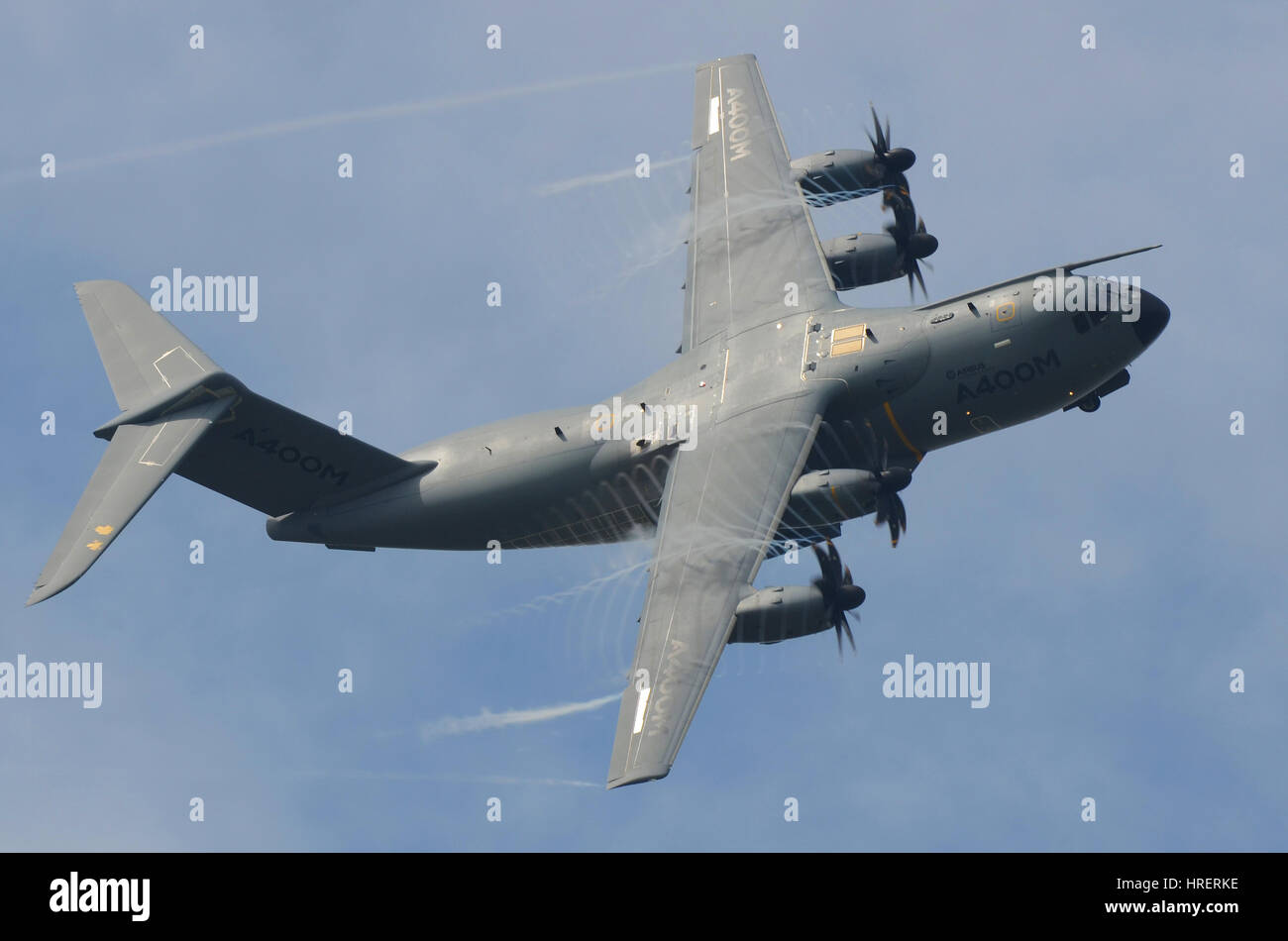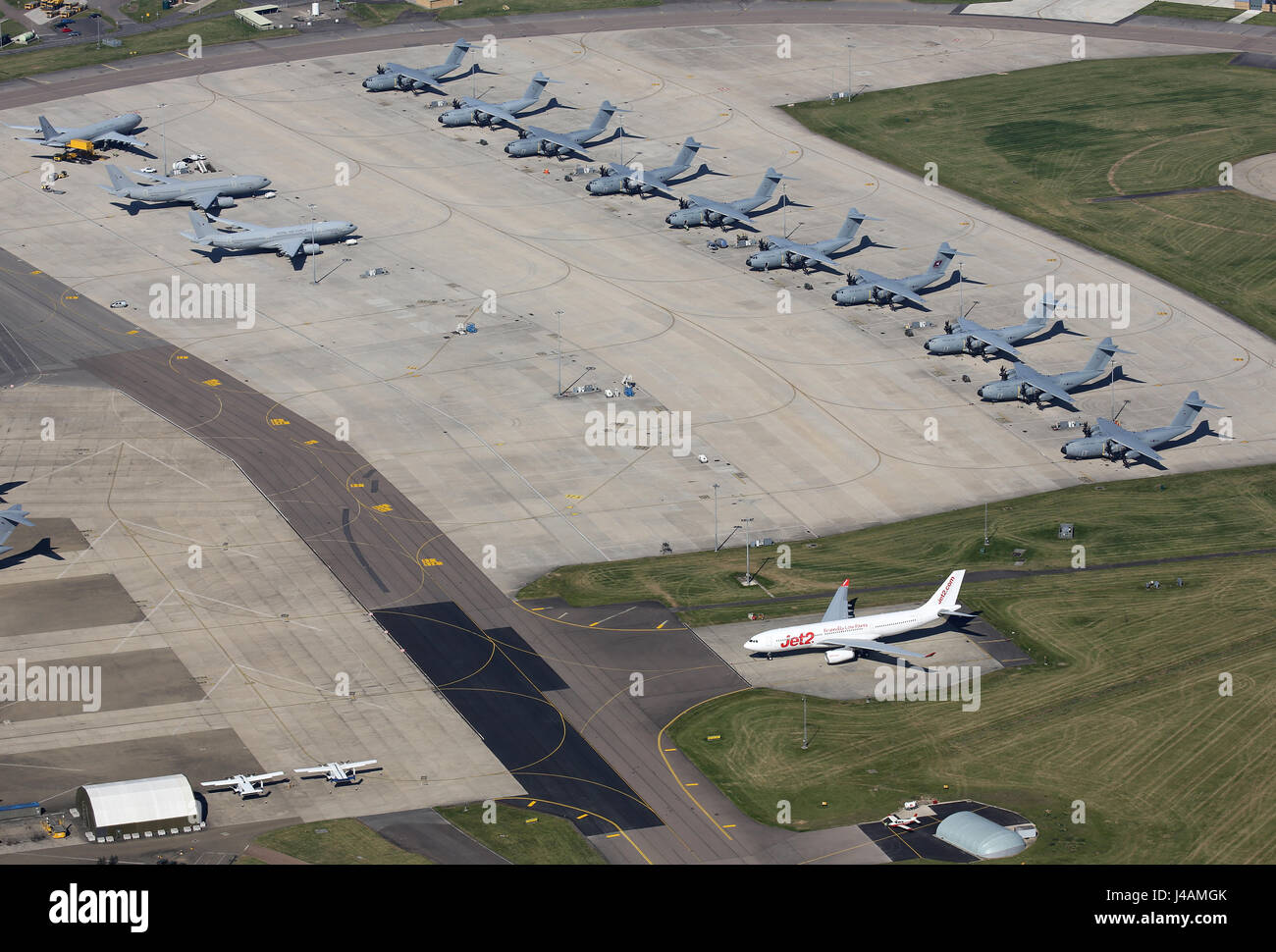Grizzly Aircraft - In March 1942, the Beech Aircraft Company began design work on a heavy two-seat fighter to destroy enemy bombers. Since the Curtiss XP-71 had already been assigned to the service, Beech developed the design into an attack aircraft to replace the Douglas A-20 Havoc. Beech gave this aircraft the Model 28 interior and submitted its proposal to the US Army Air Force on 23 September 1942. On 2 December 1942, the AAF ordered two designs and named the aircraft the XA-38; This is Beech's first fighter jet. Beech was originally called the fighter jet, but the AAF changed the name to Grizzly. The XA-38 is similar in appearance to the Beech 18, but is a new aircraft. Bill Cassidy led the project, and the plane would be strong, powerful, and well armed. Its purpose is to destroy anti-tank guns, armored vehicles, tanks, submarines, and coastal ships.
The XA-38 is a two-seat, mid-wing aircraft with a slender fuselage and twin tails. The gunner sits in the rear of the fuselage and operates the top and bottom remote turrets, each fitted with two Browning .50 cal guns. The ventral turret can be locked in the forward position and fired by the pilot in a strafing attack. In the nose of the plane was a Browning .50 cal gun and a T15E1 (M10) 75 mm cannon. The nose is open to use guns and can be moved to use different weapons. Each 50 cal gun has 500 rounds, and the 75 mm cannon has 20 rounds. Each wing supports two heavy units that can carry a total of 2,650 lb (1,200 kg) of ammunition or 600 gal (2,270 L) of fuel.
Grizzly Aircraft

The T15E1 75 mm cannon has an 84 in (2.13 m) barrel that extends approximately 2 ft (.61 m) beyond the nose of the aircraft. The cannon was self-loading, 144 in (3.66 m) long, and initially weighed 1,800 lb (816 kg). However, with further development, the weight was reduced to 1, 138 lb (516 kg). It fires a 26 in (.66 m) shell and a 15 lb (6.8 kg) projectile. The cannon consisted of a 75 mm gun (T9E2), a 75 mm feeder (T13), and a 75 mm gun mount (T15E1).
Little Bear On Airplane Flat Vector Illustration. Happy Small Grizzly Flying On Aircraft Stock Vector
A better view of the second XA-38, showing the narrow fuselage. The plane was on a test flight over Kansas.
The Grizzly's aluminum body is completely brushed, and the fully removable gear, including the tail wheel, is designed to work outside of undeveloped air spaces. The aircraft is powered by two Wright R-3350-43 engines producing 2,300 hp (1,715 kW) each. Each engine turns a 14.2 ft (4.32 m), three-fan Hamilton Standard propeller. The XA-38 can carry 640 gal (2,423 L) of fuel in its wings and an additional 185 gal (700 L) in the fuselage behind the pilot. The aircraft has a wingspan of 67.3 ft (20.5 m) and is 51.8 ft (15.8 m) long. It weighs 22,480 lb (10,197 kg) empty and has a maximum take-off weight of 35,265 lb (15,995 kg). The altitude of the XA-38 is 2,170 fpm (661 m/m), and it has an operating altitude of 27,800 ft (8,475 m). Maximum speed at 3,100 ft (945 m) is 376 mph (605 km/h), and cruise speed at 16,000 ft (4,877 m) is 344 mph (554 km/h). The 45-degree flaps allow the plane to cruise at 97 mph and operate at a 2,500 ft (762 m) runway.
Both XA-38 aircraft are flown. The larval turrets can be seen on the first XA-38 to fly (away from the camera).
The aircraft system encountered long delays due to the lack of R-3350 engines, remote turrets, and 75 mm cannon. Boeing B-29 has a main engine; Douglas A-26 has turrets; and cannons are still being developed. The first XA-38 (serial no. 43-14406) took to the air on 7 May 1944 with Vern Carstens at the controls. There were no turrets, so we substituted dummy turrets. In July 1944, the aircraft was transported to Tulsa, Oklahoma, where the 75 mm gun was installed and fired. Later in July, Grizzly shot a plane over Great Bend, Kansas.
Aerotek Turbo Grizzly C Gzly
Flight testing continues and minor issues are fixed. The aircraft performed very well, and during one of the first, low-level test flights, the XA-38 was able to outrun a P-51B pursuit plane. Captain Jack Williams was a flight test pilot for the AAF and made 38 flights in the XA-38 between 13-24 October 1944. The aircraft was reported to be very maneuverable for an aircraft of its size and easy to fly. in many air traffic conditions. The aircraft was flown to Dayton, Ohio for further inspection on 7 July 1945. At one point, at least a mock top turret was added to the aircraft.
What must be a late photo of the first Beech XA-38 Grizzly (serial no 43-14406) with what appears to be a mock-up of the upper turret installed.
The second aircraft (serial no. 43-11407) took to the air on 22 September 1945; Carstens was once again in control. This plane was fitted with the right accessories and all the equipment is working. After the first flight test, the XA-38 was transferred to Eglin Field, Florida for weapons testing. Here, he accumulated an additional 38 hours of flight testing, but there was little interest since the war was over.

Grizzly's biggest problem is that its engines need somewhere else. B-29 production did not leave the R-3350 for any A-38 production until mid-1945. By then, the war was over, and there was no apparent need for the A-38. One of the XA-38s was said to have gone to Davis-Monthan AFB, Arizona, but its fate was not recorded. Another plane is believed to have been abandoned. The only remnant of the XA-38 Grizzly is the T15E1 cannon on display at the United States Air Force Museum at Eglin AFB, Florida.
Disney California Adventure Grizzly Peak Airfield Plane 316170257_818323586059839_3981704082445155173_n X4
The T15E1 (M10) 75 mm cannon from the XA-38 as displayed at the United States Air Force Museum of Ordnance. (Photo by Tom Fey) The Beechcraft XA-38 Grizzly was an experimental aircraft from the USAAF's request for a two-seat bomber. Two prototypes were built between 1944 and 1945, and saw extensive testing within the US. The Grizzly showed promising performance, but was eventually withdrawn due to the engines intended for use specifically for the Boeing B-29 Superfortress and the subsequent defeat of the Allies.
In 1942, the United States Air Force (USAAF) issued a request for a two-seat bomber. Beechcraft was quick to respond, and proposed their design to the USAAF. The USAAF was so interested in the design, it ordered two prototypes to be built in February of that year after awarding the contract to Beechcraft. In anticipation of these two examples, the USAAF has given them the serial numbers, "43-14406" and "43-14407".
Beechcraft was specifically designed for the Model 28 to be able to destroy weapons, ships, armored vehicles and bunkers while maintaining great maneuverability and being able to stay in the air after being damaged. All this will be possible with the addition of the powerful 75mm T15E1. The task of developing the Grizzly was given to a group of Bill Cassidy and Jess Vint and Alex Odevseff in charge of design materials, Bill Irig in charge of the control area, Gus Ericson in charge of wing design, Mervin Meyers e. in charge of hydraulics, Ralph Harmon in charge of the gear system and Noel Naidenoff in charge of the mechanical area. The Grizzly is thought to be a modified version of the Model 18, but this is not true. Grizzly takes inspiration from the 18 Model, however.
Beechcraft XA-38 during seismic testing. An experiment was set up to determine the ground waves that are excited during engine operation. (US Army photo)
Jber Flies Through Exercises Patriot Grizzly, Winter Fury > Hill Air Force Base > Article Display
The first Grizzly (43-14406) was delivered to the Army Air Force and flown on May 7th 1944 by test pilot Vern L. Carstens. The first test flight went well with no mishaps during landing. This was due to Carsten's lack of experience in landing such a large aircraft. The first prototype had no weapons installed, but had a wooden replica of the 75mm T15E1 cannon. In the next few test flights, the Grizzly proved to be very aerodynamically stable, and made a good impression with the designers. The recalled flight test included a performance comparison between the Grizzly and the newly developed North American P-51B. The Grizzly and the P-51B were put in a joke, and the P-51B was reported to be unable to keep up. Then on July 7, 1945, the first Grizzly was delivered to Wright Field for use by the USAAF. It then participated in 38 test flights between October 13 and October 24, 1944 piloted by Captain Jack W. Williams. Williams happily notes that the Grizzly is a great aircraft and "very successful."
Grizzly delivery, grizzly com, grizzly bear, grizzly screen, grizzly bar, grizzly discount, grizzly coolers, grizzly equipment, grizzly tickets, grizzly cups, grizzly alcohol, grizzly bandsaws
0 Comments